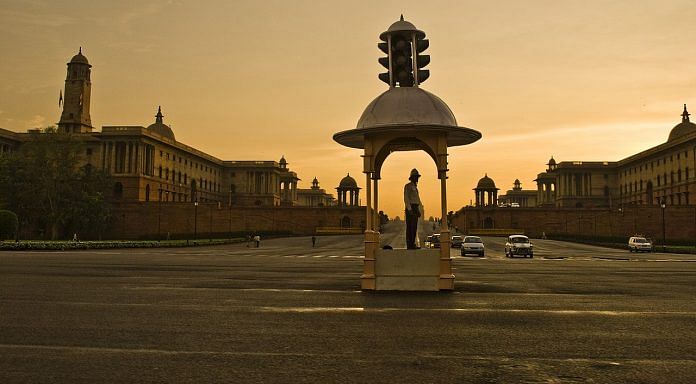Flags cost issues, says could damage heritage buildings; PIB proposal had sparked fears that govt wanted to track journalists.
New Delhi: Stating that it is impractical and not feasible, the union home ministry has scrapped the proposal by the Press Information Bureau (PIB) to replace the press accreditation cards of journalists with radio-frequency identification (RFID) cards or any other chip-based smart cards, sources have told ThePrint.
The PIB is a media unit under the ministry of Information and Broadcasting and the official communication arm of the government of India. ThePrint had last month reported about the PIB proposal being forwarded to the MHA, in January, to check for feasibility.
News of the proposal had sparked fears that the I&B ministry was seeking to track and regulate the media as it came on the back of another controversial proposal, which sought to take away the government accreditation of journalists accused of spreading “fake news.”
The ministry was then headed by Smriti Irani, who has since been divested of the portfolio. Col. Rajyavardhan Rathore has taken charge as minister of state with independent charge of the ministry.
The PIB had insisted that the move was to streamline the entry and exit of journalists into government buildings and to enhance the features of the existing card, including its appearance and feel.
Sources, however, had told ThePrint that the plan was to install card readers within specific corridors and certain zones within government buildings. This led to fears that the government wanted to track journalists by retrieving their location inside a building, and also restricting their movement within certain areas, if they were to carry those cards.
It is learnt that the idea was pushed by I&B secretary N.K. Sinha in a press accreditation committee meeting last year. Sinha will retire on June 1.
‘Requires infrastructural changes, expensive’
According to sources, representatives of the MHA, CISF, Delhi Police and PIB attended a meeting held last month, where it was decided that the idea could not be implemented.
Sources said that at the meeting, the PIB insisted that aside from having the card readers at the entry and exit points of the buildings, there should be sub zones within buildings to ensure that journalists can only access certain specific areas.
To this, the CISF representatives are learnt to have said that at present, access is controlled manually at entry and exit points of a government building, and that having sub zones would require installation of turnstiles or card readers at various points within a building.
The Delhi Police is said to have pointed out that such arrangements can only be done for specific events, where the area is small and movement can be watched and regulated. The police representative is also learnt to have said that such arrangements would be difficult to enforce in different government buildings as they house numerous ministries and departments.
The MHA is learnt to have said that it would not be feasible to adopt the smart card system just for media personnel. The MHA representatives reportedly said that not only would the exercise require replacing all four lakh cards issued to different organisations, it would also involve huge costs in the large scale electrical and civil work required for installation of card readers, turnstile gates.
The MHA is also learnt to have said that the changes could damage the heritage buildings, in which many government offices are located.
The MHA also is learnt to have categorically stated that it would not be possible to restrict the movement of media persons within government buildings, as there are no demarcated zones for different categories of visitors inside the buildings that fall under its jurisdiction.
It was then decided that the idea should be scrapped.






